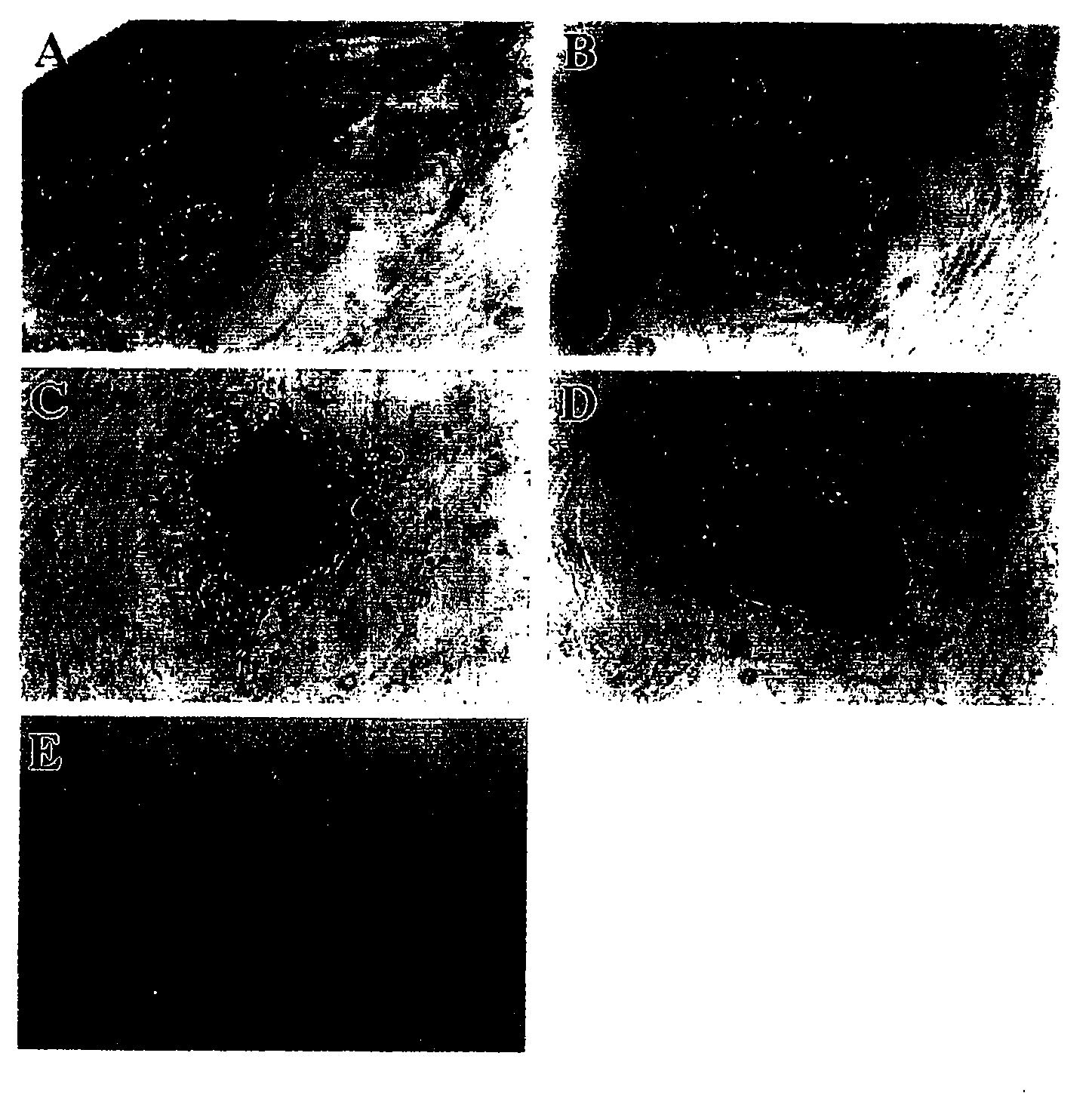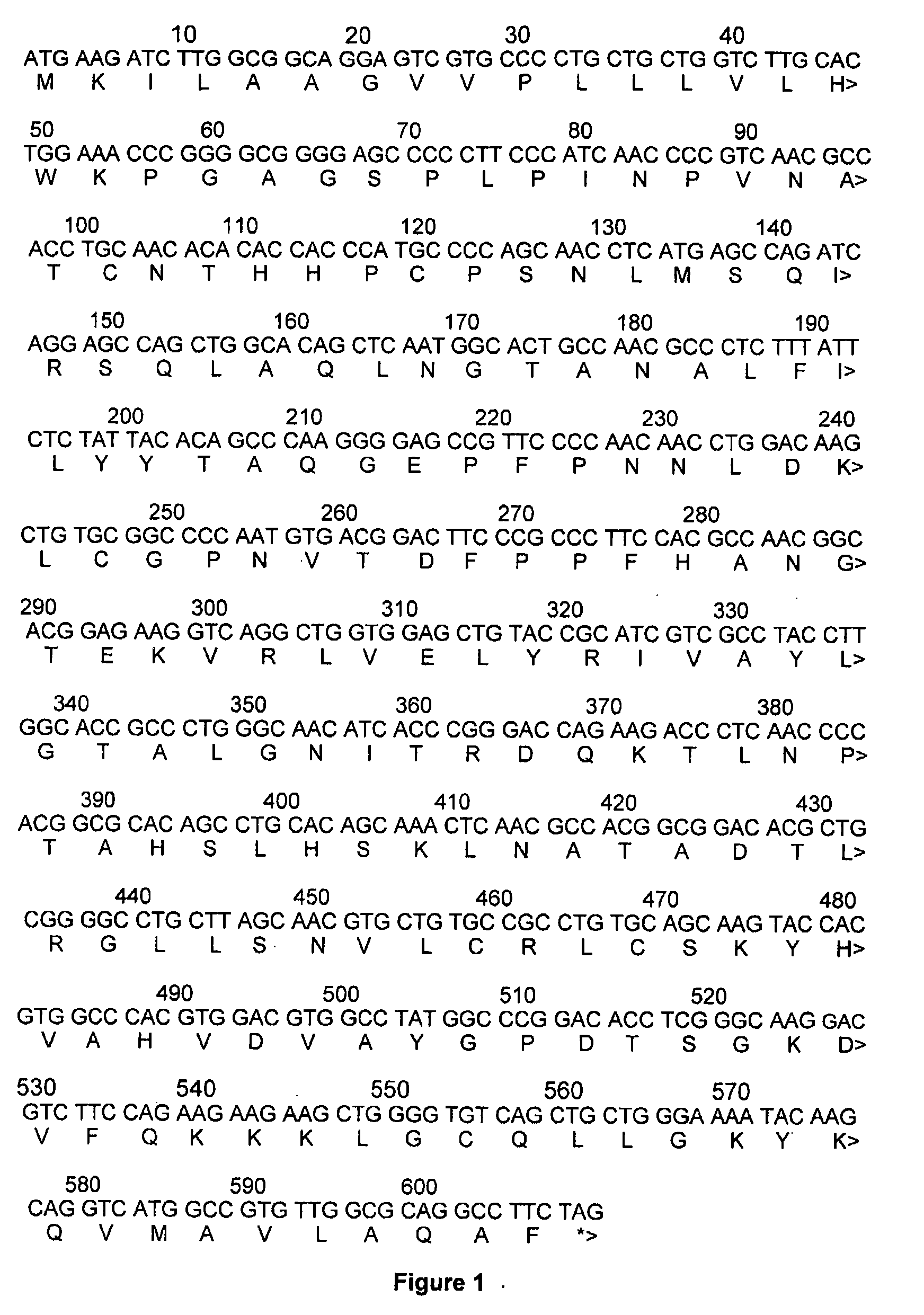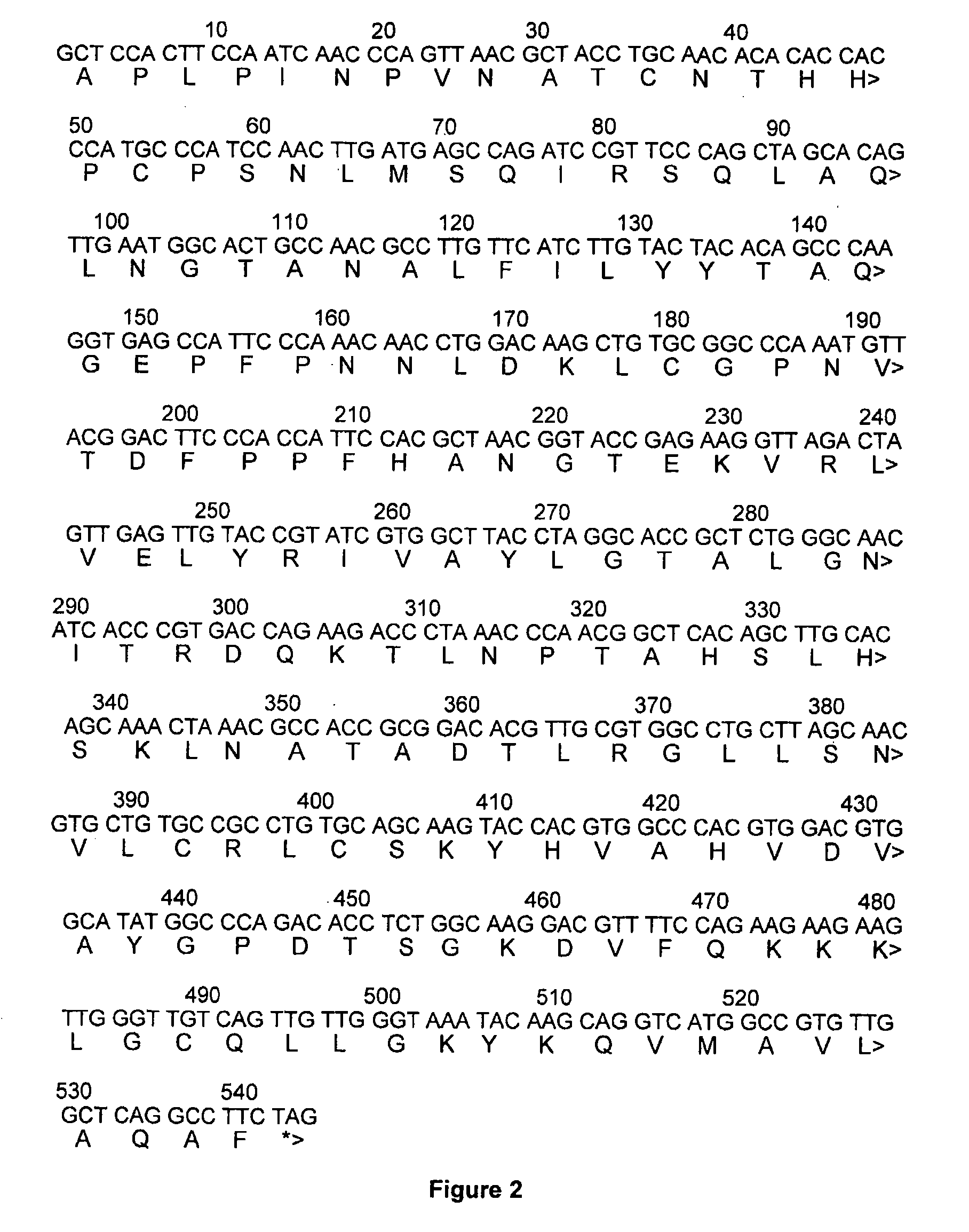Compositions for the in vitro derivation and culture of embryonic stem (ES) cell lines with germline transmission capability and for the culture of adult stem cells
a technology in vitro derivation, which is applied in the field of compositions for the in vitro derivation and culture of embryonic stem cells with germline transmission capability and the culture of adult stem cells, can solve the problems of r1 es cells losing their totipotency, reducing the pluripotency of es cells, and reducing the survival rate of es cells
- Summary
- Abstract
- Description
- Claims
- Application Information
AI Technical Summary
Benefits of technology
Problems solved by technology
Method used
Image
Examples
example 1
Production of Recombinant Rabbit Leukemia Inhibitory Factor (Rab-LIF)
[0078]The above-referenced method and ES cell medium can optionally include LIF, preferably recombinant Rab-LIF, to help maintain ES cells undifferentiated and capacity to produce germline transmission. In FIG. 1, the nucleotide sequence of Rab-LIF is provided along with the peptide sequence thereof.
[0079]Rab-LIF may be prepared by a number of methods, typically by one of the many molecular biological tools, i.e., expression systems, available to biologists. In such a case, DNA molecules encoding Rab-LIF protein may be operably linked to DNA molecules encoding a transcription promoter and terminator to create an expression cassette. The DNA molecule containing the promoter, terminator and Rab-LIF-encoding DNA may then be introduced into a cell for production of the Rab-LIF protein. Preferably, a DNA encoding a secretion signal is operably linked to the Rab-LIF-encoding DNA in such a manner that active Rab-LIF is se...
example 2
Production of ES Cell Culture Medium Preconditioned with Rab9
[0088]In one embodiment of the present invention, basic ES cell medium, conditioned by confluent monolayer cultures of the Rab9 fibroblast cells, is collected for 4 consecutive days and the conditioned media are pooled for use in ES cell culture. Each day 15 cm Petri dishes are refreshed with 25 ml of basic ES medium. After 4 days each 15 cm Petri dish is split at a ratio of 1 to 4. The first day after splitting, the medium is discarded. To 1 liter of conditioned basic ES medium (from the mixture of the 4 collection days), 80 ml fetal bovine serum, 17 ml non-essential amino acids, 20 ml glutamine, 6.3 μl β-mercaptoethanol, 1.25 ml insulin and 80 ml basal medium is added and the pH is adjusted to 7.4. The basic medium was composed of: 500 ml DMEM high glucose, 70 ml fetal bovine serum, 13 ml penicillin / streptomycin, 13 ml glutamine, 6.3 μl β-mercaptoethanol, and 13 ml non-essential amino acids. Enriched basic medium is basi...
example 3
Derivation and Culture of Murine Embryonic Stem (ES) Cells
1. Mouse Strains and ES Cells
[0090]ES cells can be derived amongst others from the following commercially available mouse strains: 129 / SvEvTaconic (Taconic, Germantown, N.Y., USA); C57BU6NTacfBr (Taconic); BALB / cAnNTacfBr (Taconic); DBA / 2NTacfBR (Taconic); C3H / HeNTac MTVfBe (Taconic); FVB / NTacfBR (Taconic); Tac: (SW)fBR, Swiss Webster (Taconic); 129 / SvJ (The Jackson Laboratory, Bar Harbor, Me., USA); C57BL / 6J-HPRT (The Jackson Laboratory); C57BL / 6JOlaHsd (Harlan, Indianapolis, Ind., USA); CBA / CaOlaHsd (Harlan); DBA / 1OlaHsd (Harlan), DBA1LacJ, CD1, BALB / c, MRL, C57BL / 6×CBA.
2. Derivation of Murine ES Cells
[0091]ES cells can be derived from 3.5-4.5 days old blastocyst stage murine embryos, which can be collected and plated individually on a 96 well dish covered with a mitotically arrested mouse embryonic fibroblast feeder monolayer. The blastocysts are allowed to attach to the monolayer, and refed every day with conditioned ES ...
PUM
| Property | Measurement | Unit |
|---|---|---|
| concentration | aaaaa | aaaaa |
| concentration | aaaaa | aaaaa |
| concentration | aaaaa | aaaaa |
Abstract
Description
Claims
Application Information
 Login to View More
Login to View More - R&D
- Intellectual Property
- Life Sciences
- Materials
- Tech Scout
- Unparalleled Data Quality
- Higher Quality Content
- 60% Fewer Hallucinations
Browse by: Latest US Patents, China's latest patents, Technical Efficacy Thesaurus, Application Domain, Technology Topic, Popular Technical Reports.
© 2025 PatSnap. All rights reserved.Legal|Privacy policy|Modern Slavery Act Transparency Statement|Sitemap|About US| Contact US: help@patsnap.com



